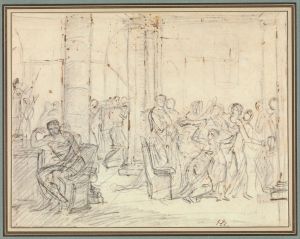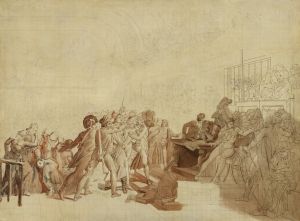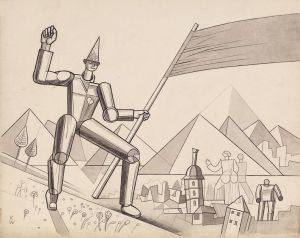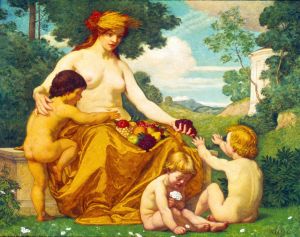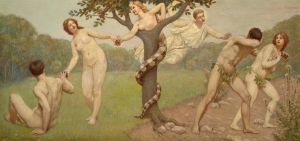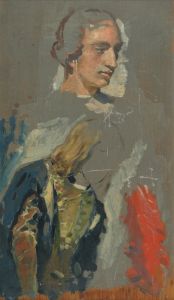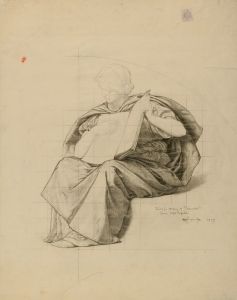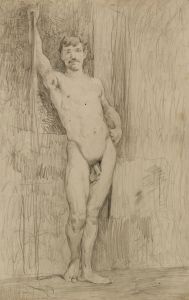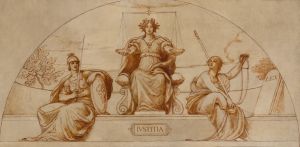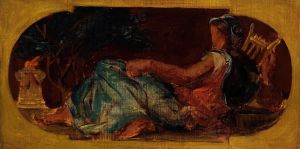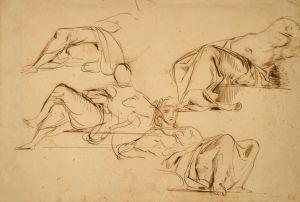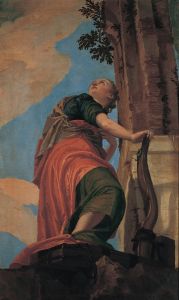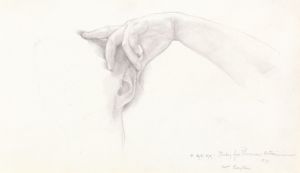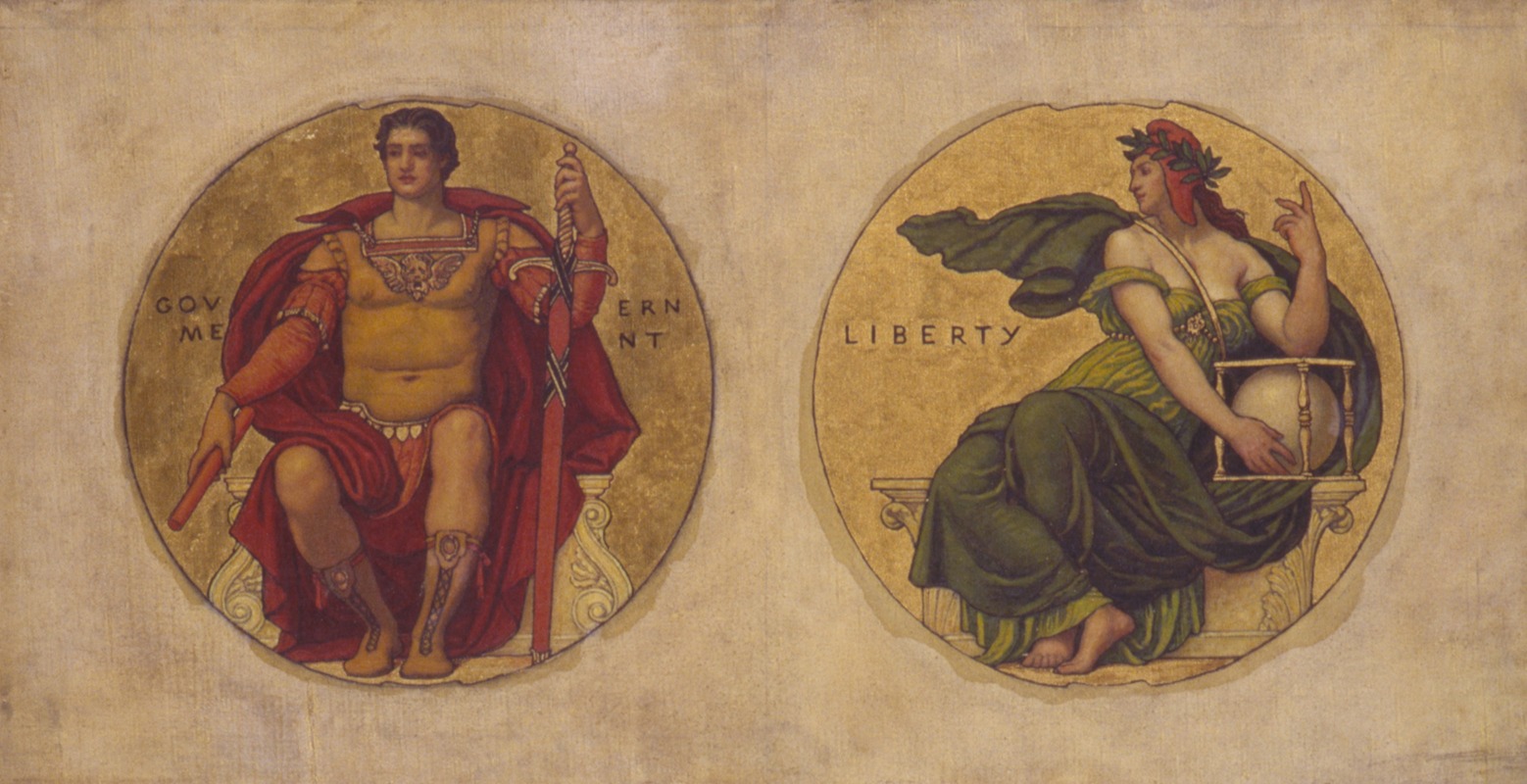
Study for mosaic in the Wisconsin State Capital ‘Government and Liberty’
A hand-painted replica of Kenyon Cox’s masterpiece Study for mosaic in the Wisconsin State Capital ‘Government and Liberty’, meticulously crafted by professional artists to capture the true essence of the original. Each piece is created with museum-quality canvas and rare mineral pigments, carefully painted by experienced artists with delicate brushstrokes and rich, layered colors to perfectly recreate the texture of the original artwork. Unlike machine-printed reproductions, this hand-painted version brings the painting to life, infused with the artist’s emotions and skill in every stroke. Whether for personal collection or home decoration, it instantly elevates the artistic atmosphere of any space.
Kenyon Cox was an influential American painter, illustrator, and writer, known for his contributions to the American Renaissance movement. One of his notable works is the "Study for mosaic in the Wisconsin State Capitol ‘Government and Liberty’," which reflects his mastery in mural and mosaic design. This study was part of a larger commission for the Wisconsin State Capitol in Madison, a building renowned for its architectural grandeur and artistic embellishments.
The Wisconsin State Capitol, completed in 1917, is an architectural marvel that houses the state legislature, the Wisconsin Supreme Court, and the Office of the Governor. It is adorned with various artworks that celebrate the state's history, governance, and cultural values. Kenyon Cox was among the artists commissioned to contribute to this artistic vision, and his work was integral to the Capitol's decorative scheme.
Cox's study for the mosaic "Government and Liberty" was a preparatory work that laid the groundwork for the final mosaic installed in the Capitol. The study reflects Cox's classical training and his commitment to the ideals of the American Renaissance, which sought to revive classical art forms and integrate them into American public architecture. His work often featured allegorical themes, drawing on classical mythology and symbolism to convey moral and civic virtues.
In "Government and Liberty," Cox likely explored themes central to the functioning of a democratic society. While specific details of the study are not extensively documented, it can be inferred that the work embodied the balance between governance and individual freedoms, a recurring theme in American civic art. The use of allegory would have been a key element, with figures representing abstract concepts such as justice, liberty, and governance.
Cox's artistic process involved meticulous planning and execution. Studies like "Government and Liberty" were crucial in refining his ideas and compositions before they were translated into large-scale works. These studies allowed Cox to experiment with form, color, and symbolism, ensuring that the final mosaic would resonate with viewers and complement the Capitol's architectural style.
The final mosaic, informed by this study, would have been crafted using small pieces of colored glass or stone, a technique that allows for vibrant color and durability. Mosaics are a fitting medium for public buildings, as they can withstand the test of time while providing a visual narrative that educates and inspires.
Kenyon Cox's contributions to the Wisconsin State Capitol are a testament to his skill and vision as an artist. His work remains an integral part of the Capitol's artistic heritage, reflecting the values and aspirations of the state of Wisconsin. Through his study for "Government and Liberty," Cox not only showcased his artistic prowess but also contributed to the broader cultural and civic dialogue of his time.





